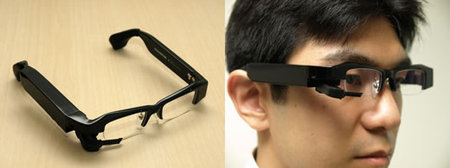
Image via DefenseNews
"Train the brain: It’s a recurring mantra for the training and simulation industry, but it has never been more pertinent than for veterans struggling with post-traumatic stress disorder. Adapting existing technology to clinical needs isn’t necessarily new — but it is picking up speed and a variety of options.
One of the rising stars is virtual reality, which is moving from game controllers and low-fi graphics to molded resin replicas of guns and goggles displaying first-rate worlds. There, troops can travel back to their traumatic events and work through the thoughts that still haunt them.
...
One therapeutic PTSD tool, the Virtual Iraq/Afghanistan program, is in place in close to 50 hospitals and clinics across the U.S. The system offers a variety of scenarios. With the smell of gunfire and body odor in the air, troops can drive along a desert road only to have their Humvee hit an improvised explosive device. Or they can walk the town as the call to prayer rings in their ears, passing a spice market only to hear gunfire break out. It will never replicate the traumatic event a service member had in the war zone, but it doesn’t have to.
“With virtual reality, you are limited by the technology,” said Michael Kramer, a clinical psychologist who uses the Virtual Iraq/Afghanistan program through VA. “You can’t re-create that exact occurrence, but you can help trigger a memory.”
...
Although increased graphics and options will certainly make the simulation more realistic, Rizzo emphasizes that the basis of the therapy is in the scientific research and results behind it. Exposure therapy works effectively, and the data are just starting to trickle in for virtual reality therapy.
...
PTSD tools are not constrained to a set of goggles or a head-mounted display; several tools are available through virtual worlds accessed via the Internet. SimCoach is an interactive program with four different avatars that users can talk with about PTSD. The coach can give the user an assessment, suggest local care facilities, give information about the disorder, and offer an anonymous place to talk.
...
Virtual reality programs — whether they rely on goggles or laptops — all face the same struggle when trying to provide proper levels of realism. Users are aware that they are looking at something computer-generated, and programs that try for complete realism may tumble instead into the “uncanny valley” — where not-quite-perfect human avatars can be off-putting.
...
However, for ease of access, nothing beats the mobile device already sitting in many service members’ pockets. Using a mobile app is private, relatively anonymous, free and totally at the service member’s convenience.
...
Within the next year, researchers should accumulate mountains of data about how the more technological approach to PTSD is working, which will either confirm or refute the anecdotal evidence of success. Despite the different approaches, all attempt to change how veterans think about their traumatic experiences, rewiring their brains so that they learn to cope with triggers and responses to stress. The knowledge gained from treating and training veterans may eventually help those with PTSD from other traumatic events, such as rape or abuse.
“The driver is war,” Rizzo says. “War sucks. But every damn war has driven innovation and advances in medicine, rehabilitation and mental health.”" via DefenseNews
 Display Alliance
Display Alliance

